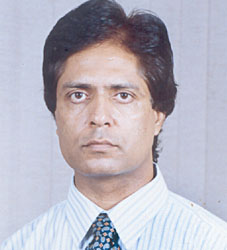Five Bitter Truths about Social Media
Those who don’t understand the basics of bits and bytes blindly believe that online social media has so far been the most attractive tech sensation of the 21st century. But you must not ridicule them because such believers are living in dark. They deserve your sympathy rather than scorn.
By Rakesh Raman
To help them step into the realm of light from the perpetual darkness in which they live, here I come with some of the most revealing facts about social media.
Five bitter truths about social media:
1. Inflated Numbers: The most mischievous hype around social media properties is spread not by the users but by the property owners. If Facebook, for instance, claims it has over 800 million active users on the site, it’s nothing but a blatant lie. Its very statement of ‘active users’ is surrounded by a lot of ambiguity.
Twitter’s 300 million and Linkedin’s 120 million users are just numbers – nothing less, nothing more – while social networking is totally missing on all these sites. The actual number of real social networkers is not even 10 percent of their tall claims.
2. Lack of Activity: While majority of the Facebook subscribers never show up after creating their accounts, some who come back, mostly waste time in playing social games on Facebook for which the social networking site can’t claim credits.
Twitter hardly gets any interaction among the network members who mostly throw out utterly tasteless tweets ranging from the color of their toilet walls to their dislike for bananas. Others are not interested in this useless 140-characater blabber.
And on average, 8 out of every 10 updates on Linkedin are of the type: “A is now connected to B.” God knows what they will do with all these connections when they can’t write even a single straight sentence in their updates.
So, it’s estimated that more than 98 percent of the data on all these social media sites is nothing but junk that has made these sites colossal information junkyards on the Web.
3. Low or No Business: In the global ad market of about $450 billion annually, the share of online media continues to be a meagre 5 percent. And all social media properties put together get a tiny 5 percent of the total online sliver of 5 percent.
Digital market researcher eMarketer says worldwide social network ad revenues will reach $5.54 billion this year (2011), with just under half that amount, $2.74 billion, coming from the U.S. market.
That means, the revenue share of social media sites in the total ad market is a dismal 1 percent or so. Then why this unruly noise around social sites?
Although traditional media – including TV and newspapers – is a victim of confusion created by digital and social media marketers, it still gets almost 70 percent of the ad market share. Radio, outdoor advertising, etc. are bigger than online including social media.
Almost all social media properties are surviving on external investors’ money. They would have gone bankrupt by now without the help from these investors, who have enough bucks to burn in a long-term social gamble.
4. Repelling Interfaces: The user interfaces on social media sites continue to be confusing. Among other serious user experience (UX) flaws, the sites deliberately hide the level of interactions with individual posts. As a result, you see only the static data like your number of connections on Linkedin or the number of friends on Facebook. You don’t get any idea on the real-time engagement from users with your updates or posts.
Another example: Linkedin keeps showing an abnormally large number about the new people in your network. This number has no meaning at all and users can’t use it anywhere. Linkedin’s “Show more recent updates…” message is also wrong, because you hardly get the number of updates that Linkedin displays in its message. While Facebook has numerous UX flaws, Twitter’s interface is so pathetic that it does not even deserve any discussion.
5. Click Frauds: You would have heard about click frauds for online ads. As one of the payment criteria for advertisers is to pay on the basis of the number of clicks by consumers on their ads (termed as cost per click), publishers use software-based or human-based fraudulent ways to get more clicks to maximize their revenues.
Similarly, on social media sites, marketers use various dirty tricks to get more followers for their brand pages. For example, Facebook “Likes” have hardly any meaning for the promotion of a brand. But many desperate outfits are trying to entice Facebook users with baits of different types to get their “Likes,” which is nothing more than a number that cannot promote any brand. Consumer engagement is missing.
Other social media frauds include the deployment of cheap workers by social media agencies and brand marketers. These low-cost workers keep Liking posts and pages and they write useless comments like “Cool,” “True,” “Very true…” and so on. Social media agencies show these meaningless comments, etc. as their achievement in terms of impact from a social media campaign and to hoodwink the advertisers.
Twitter is the worst example of this artificial world. It is a mere I-follow-you-if-you-follow-me network where users are scurrying to just get more number of followers by hook or by crook. You can notice for most Twitter users that the number of followers they have is approximately equal to or less than the number they follow.
As a rule, you can count a person as a real Twitter user only if the number of followers they have is at least five times the number of users they follow. In other words, the ratio of ‘follow’ to ‘followed’ should be 1:5. All other users are dummies; Twitter can’t count them in its claims for total number of users on its site.
Given these truths about social media, advertisers must think twice before investing any money on social media-based promotions. At this stage, social media sites are just for some idle junkies who have plenty of time to waste by just hanging around there. These sites are not yet ready for any serious online marketing. Believe me.
By Rakesh Raman, the managing editor of Raman Media Network.
You can also read: More Articles by the RMN Editor, Rakesh Raman






A very interesting read. I actually agree with most of your points but I still feel social media is crucial to gaining a creating a fan base. I now have zero interest in twitter or linkedin but believe for our company facebook and pinterest are very important.
I don’t believe you. Your points are valid but your conclusion isn’t. I think most people use an ineffective online marketing strategy. They look to volume instead of building relationships and trust. Perhaps for the mega retailer or corporation, social media isn’t effective but for the small business person who only reached a small market before, they suddenly have the potential for a global marketplace. You do need to use the right strategies. In the worst economy in 80 years, I have still found social media marketing to have the best ROI of anything I have tried in the past 30 years. Of course, I didn’t go it alone. I made sure I had the best resources and marketing advice and I listened and implemented.